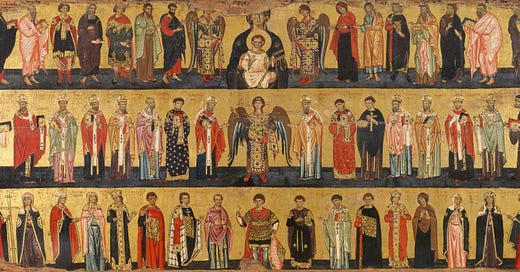Happy feast of All Saints to all my readers!
Having just returned from the pilgrimage, I’ve still so much to think about — and so much sleep to catch up on. I’ll be writing soon about Greece & Turkey. For today, we’ll do our usual weekly roundup, although this time it will comprise two weeks’ worth of news and reflections. Without further ado…
Sacred Hear…
Keep reading with a 7-day free trial
Subscribe to Tradition and Sanity to keep reading this post and get 7 days of free access to the full post archives.





